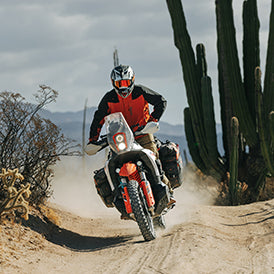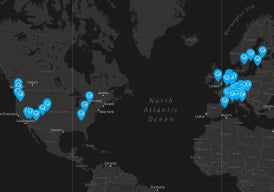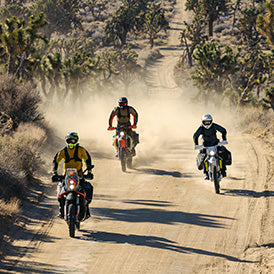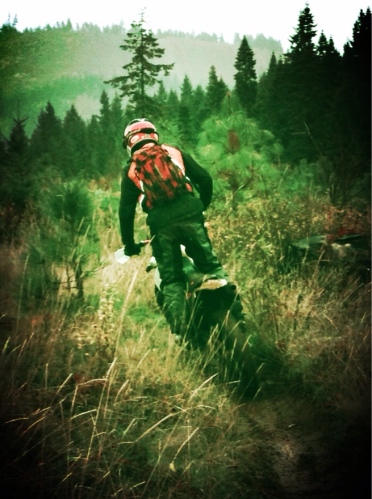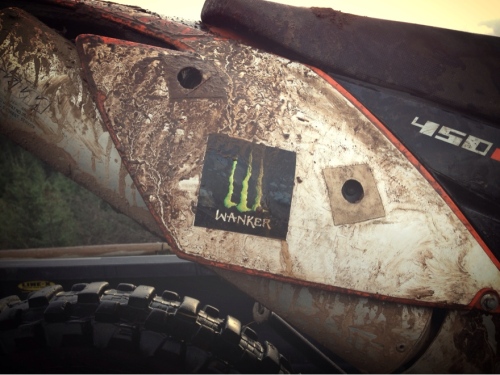Your Cart is Empty
Luggage
Apparel
events
The Mosko Blog
Country of Origin
March 30, 2022
Country of Origin
November 7, 2013
We need a factory. The question is: where? Made in the USA feels good, and we get shorter lead times with smaller minimums. However there are so many more factories overseas, plus we can produce a much more interesting bag for the same cost. For a big company making thousands of bags the choice is easy. For little guys like us it’s harder.
Either way, just finding a few good factories to talk to (no matter where they’re located) is hard enough, let alone convincing them to pay attention to us. That’s the first step. We have a lead on one factory in Idaho and another in Oregon. Plus earlier this week we met with a Vietnamese factory who was in town to visit Nike. Country of origin might well be determined by which factory takes us seriously first.
Pannier:
This week we redesigned the pannier again, and I can now say with 100% confidence that we’re working on an item which I would definitely buy and use myself. That’s the benchmark Andrew and I set: if it’s not something we would actually buy and use vs all the other options on the market, then we won’t bother making it.
We added a large beavertail. This serves three purposes. 1) it is an awesome stash spot for stuff like a wet rainfly, rain jacket, or six pack. 2) it’s an abrasion barrier which can be easily patched or professionally repaired after a crash, because it can be folded away from the bag and run through a sewing machine. And 3) it provides a nice evenly balanced compression surface across the entire front side of the pannier. Here’s the initial beavertail pattern.
Here’s the beavertail drawn out on the second round proto. Also there’s a molle hydration pouch that we’ve been messing around with, and some hypalon cut for molle.
Hand cutting hypalon for our molle panels, which will be on the front and bottom of the pannier.
Rear Duffle:
We got our second round duffle prototype and although it’s very rough, we love it. It’s a double-ended roll top with overlapping beavertails on the top and backside. The beavertails can be used while the bag is strapped to the bike, so they’re great for jackets, tents, etc, and could also accommodate a small drybag.
There will be three sections of molle webbing, two on either side behind the rider (perfect for fuel bottles or small pouches/storage) and one large horizontal one on the outside of the front beavertail (which we picture being used for a hydration bladder). In this pic we’re experimenting with a fuel bottle in a molle bottle holder.
Here’s chip testing the stowable backpack straps.
Rackless System
After considering lots of different shapes/sizes, we like the Giant Loop approach the best, i.e. one integrated bag connecting the passenger footpegs to the rear of the bike. Working with that approach we want to integrate other features from our pannier and duffle, i.e.: roll top closures, large beavertails, external pockets, accessibility while strapped to the bike, 100% waterproof, and molle webbing. The waterproof part will be tricky because of the unusual shape, but we’ll create a proto and then figure out the waterproof part later.
Here’s Andrew & Chip working on initial sketches.
Apparel:
The world of cut & sew is large and intimidating, with big players, big factories, and large minimums. I had an opportunity to speak with the founder of Dragon Alliance last week (the goggle company) and one piece of advice he offered was: stay out of apparel! He was referring to the seasonal and fashion-oriented motocross stuff, but still… it made me think. Neither Andrew nor I have an apparel background and moto gear is extremely technical. Luckily we have a friend who works as a designer at a large moto apparel company. He also happens to be a hardcore dualsport/trail rider and he wants to help.
This week we’ve been looking at stuff that’s already on the market. A few thoughts:
– There is a lot of awesome gear out there. In the last few years it seems like the market has gone from sparse to crowded. It will be challenging to distinguish ourselves.
– Klim raised the bar with their multi-tiered dualsport introduction a few years ago. They have something for everyone, from the Adventure Rally kit at ~$2,100 all the way down to the Traverse kit at ~$500. Man, Klim has a huge product line. Looks like great stuff.
– Moto apparel tries to accomplish a lot of functionality with a single garment. Waterproofness. Abrasion resistance. Impact resistance. Wind stoppage. Moisture wicking. Venting/Cooling. Warmth. Pockets/Storage. Hydration. It’s crazy how much is expected from a single garment.
– I can’t help but wonder if the engineering has gotten a bit out of control? Maybe simpler would be better. How many pockets do we actually need? It might be better to focus on the primary features that core riders actually use, and skip the more gadgety features which appeal to riders on the fringe.
– Instead of getting all the functionality from a single garment, a lot of riders are separating the abrasion layer (i.e. a moto jacket without built-in armor), the waterproof layer (a waterproof jacket/liner worn either under/over the abrasion layer), and the impact layer (a pressure suit or body armor). There are a bunch of advrider threads on this. Reminds me of the layering systems in other outdoor sports.
– This is such a big project that it seems like the only approach is to dive in and just be confident that we’ll come up with something cool in the end. We’ll try that and see how it goes.
There was also some riding to be had this week, despite the weather.
Our first sponsor?
Leave a comment
Comments will be approved before showing up.
Warranty and Crash Replacement
We never cut corners during development or manufacturing, so we stand behind our products. If one fails due to a problem with materials or workmanship, we’ll make it right.
Your are successfully subscribed for email notifications.
Notify me when available
We will send you a notification as soon as this product is available again.
Your email is required
We don't share your email with anybody
x

